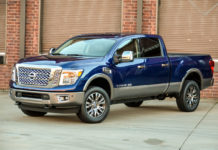In a world where people do all kinds of crazy stuff in a car besides driving, Dr. Sheila Klauer has seen it all. She has witnessed a woman attempting to insert her contact lenses while speeding down an urban expressway. She has watched a driver eat Chinese carryout from a carton using chopsticks. And she has seen a teenage boy change his clothes while behind the wheel in moving traffic.
How risky is such behavior? What are the odds that such extracurricular behind-the-wheel activities will lead to a crash?
Klauer, a senior research associate at the Virginia Tech Transportation Institute, recently led a research team sponsored by the AAA Foundation for Traffic Safety that asked and answered those very questions. In this unique study, more than 240 participants in and around Washington, D.C., agreed to have their everyday driving behavior recorded over the course of a year. They drove 100 specially equipped vehicles, each outfitted with five digital video cameras and a custom-designed “black box” that registered data such as following distance and lateral acceleration as well as speed, forward acceleration and braking. In all, the study recorded 82 collisions, 761 near-crashes and over 8,000 incidents circumstances that required quick action to avoid a crash.
This extensive and elaborate recording gave researchers an opportunity never before available. For the first time, we could look at exactly what a driver was doing immediately before a crash or nearcrash, explains Klauer. Furthermore, they used sophisticated mathematical analysis to correlate particular activities with realworld crashes, near-crashes or incidents.
After viewing the videos and crunching the numbers, the researchers identified four specific behaviors that dramatically increase the odds of having a crash: speeding, drowsy driving, taking your eyes off the road for two seconds or longer, and aggressive driving a combination of tailgating, speeding, frequent lane changes and other maneuvers that reveal a drivers impatience, anger or frustration. Above all, researchers found that drowsiness contributes to far more traffic crashes than anyone had suspected before.
Speeding nearly tripled the odds of having a crash. By speeding, researchers don't mean simply driving faster than the posted limits. They really mean driving faster than prevailing traffic or driving at a speed inappropriate for conditions.
Drowsiness proved just as dangerous as speeding, also nearly tripling the odds of a crash. The significance of drowsy driving as a cause of crashes surprised even the researchers. In our study, it accounted for a much higher percentage of crashes than in any previous study, notes Klauer. Up until now, the best available estimates suggested that drowsiness causes between 76,000 and 100,000 crashes a year roughly 2 to 4 percent of all collisions nationwide. The Foundation-sponsored analysis, however, puts the number closer to 20 percent.
Why the big difference? Previous estimates relied on police reports andother after-the-fact attributions of causes. By contrast, AAA Foundation-sponsored researchers looked at real-world videos of actual drivers in the minutes immediately preceding a crash or near-crash, and they found lots of signs of sleepiness: yawning, slack facial musculature and drooping eyelids. In particular, a lack of eye movement characterized drowsy drivers. They tended to stare fixedly, straight ahead, through partially closed eyes. Almost equally surprising, most drowsy-driving episodes occurred during broad-daylight hours not at night, dusk or dawn.
Distractions requiring the driver to look away from the road for two seconds or longer nearly doubled the chances of a crash. This category included applying make-up, dialing a cell phone, searching for a CD or even reading behind the wheel all non-driving-related activities. Adjusting the climate controls, changing stations on the radio and other behaviors commonly associated with driving usually didn't take more than two seconds.
As Klauer notes, the results show just how quickly and unexpectedly traffic conditions can change, making distractions dangerous even when you maintain a safe following distance. A lot of the rear-end crashes in our study occurred when our drivers kept a greater-than-two-second headway between their car and the car ahead of them, she says. Despite this safety cushion, they turned their attention away from the road, something happened that caused traffic to slow down or brake, and bam! they hit the vehicle ahead.
Aggressive driving, like two-second distractions, also doubled the risk of a crash. For purposes of the study, researchers defined aggressive driving not only as using the vehicle to menace another driver or pedestrian, but also as a combination speeding, weaving in and out of traffic, running stop signs and other actions. We were trying to capture the driver's attitude, explains Klauer.
For instance, tailgating alone did not constitute aggressive driving, and it didn't necessarily lead to more crashes or near-crashes. In fact, researchers found that tailgating seems common in congested urban areas like Washington, D.C.; drivers simply adapt to prevailing conditions and manage to reduce their following distance without too much trouble. While following too closely should not be advocated as a safe driving behavior, concluded researchers, drivers learning to be more alert and responsive to [congested] dynamic traffic environments may have contributed to [the low crash rate].
Klauer and her colleagues hope to mine this rich vein of unique, real-world data further. For example, future studies might examine the crash risk associated with particular types of drivers or particular combinations of activities. And the videos and black-box readings may prove useful in developing collision-avoidance systems. For example, we might look at which types of collisions could've been prevented with a warning system, notes Klauer. Or, how can we design a collision warning system to prevent certain types of crashes?
Until then, research delivers an unambiguous message: Distractions and drowsiness are far more dangerous than anyone had believed. As Klauer puts it, It has certainly taught me the importance of staying alert and keeping your eyes on the road at all times.







